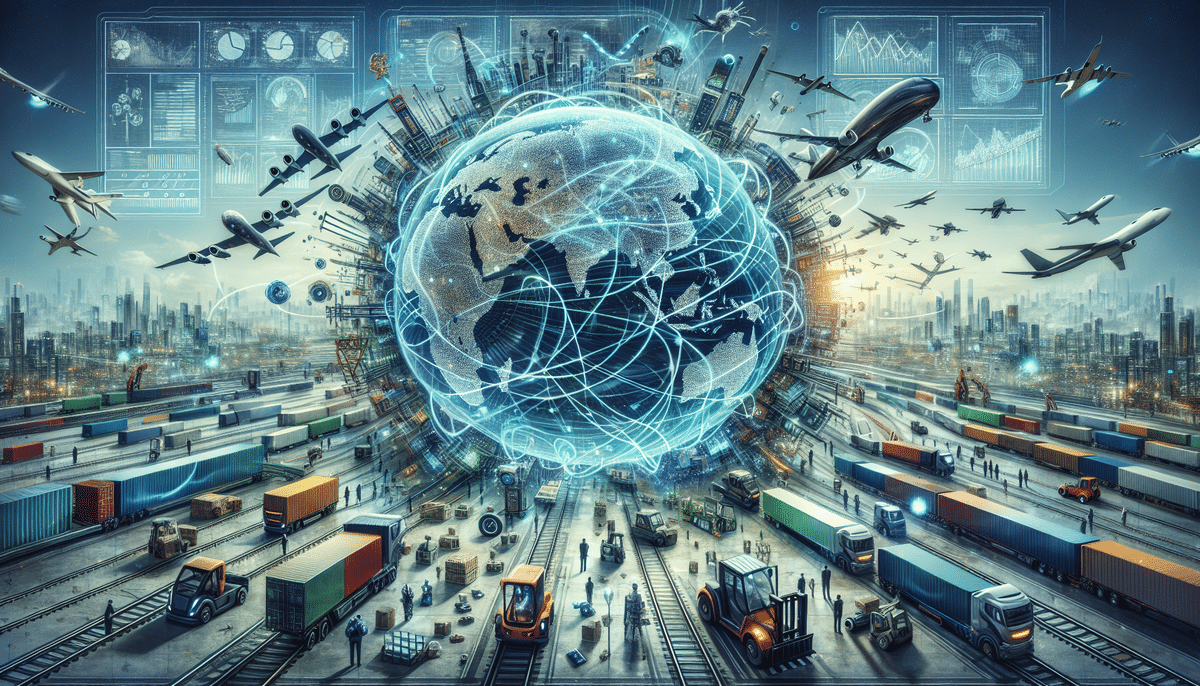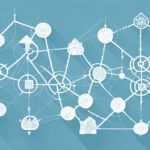Overview of the Modern Logistics Industry
The logistics industry is a cornerstone of the global economy, facilitating the movement of goods from suppliers to customers across the world. It encompasses a wide range of activities, including transportation, warehousing, inventory management, and supply chain coordination. Efficient logistics operations are crucial for businesses to remain competitive, ensuring that products are delivered promptly and cost-effectively.
In 2023, the logistics sector continues to evolve, driven by advancements in technology, shifting consumer demands, and increasing emphasis on sustainability. According to the Statista Logistics Report, the global logistics market is projected to reach over $12 trillion by 2025, highlighting its significant role in international trade and commerce.
Key Challenges in Logistics Today
Capacity Constraints
One of the primary challenges in the logistics industry is capacity constraints, particularly in transportation and warehousing. Increased demand, driven by e-commerce growth, often outpaces the available infrastructure, leading to delays and higher costs.
Driver Shortages
The shortage of qualified drivers, especially in the trucking sector, poses a significant hurdle. According to the U.S. Bureau of Labor Statistics, the trucking industry faces a persistent driver shortage, affecting delivery times and operational efficiency.
Rising Customer Expectations
Consumers today expect faster delivery times, real-time tracking, and seamless service. Meeting these expectations requires logistics companies to continuously optimize their operations and adopt innovative solutions.
Sustainability Pressures
There is an increasing demand for sustainable logistics practices. Companies are under pressure to reduce their carbon footprint, manage waste effectively, and implement eco-friendly transportation methods.
Technological Advancements Transforming Logistics
GPS Tracking and Real-Time Data Analytics
GPS tracking systems and real-time data analytics have revolutionized route planning and fleet management. These technologies enable logistics companies to optimize delivery routes, reduce fuel consumption, and improve overall efficiency.
Autonomous Vehicles and Drones
Autonomous vehicles and drones represent the future of last-mile delivery. Companies like Tesla and SpaceX are investing in self-driving technology, which promises to enhance delivery speed and reduce labor costs.
Internet of Things (IoT) Sensors
IoT sensors provide valuable insights into inventory management, environmental conditions, and equipment performance. These sensors help in predictive maintenance, reducing downtime, and ensuring the safe transport of goods.
Warehouse Automation
Automated systems, including conveyor belts and robotic pickers, streamline warehouse operations. Companies like KUKA and Fanuc are leading the way in deploying robotics to enhance accuracy and efficiency in warehouses.
Globalization and Its Effects on Logistics
The rise of globalization has significantly impacted the logistics industry, introducing both opportunities and complexities. Multinational corporations must navigate diverse regulatory environments, customs requirements, and varying transportation infrastructures to ensure smooth cross-border operations.
Global supply chains are more vulnerable to disruptions caused by political instability, economic fluctuations, and natural disasters. According to the World Economic Forum's Global Risks Report 2023, supply chain disruptions are among the top global risks, emphasizing the need for robust contingency planning.
Additionally, globalization has intensified competition within the logistics sector, pushing companies to innovate and differentiate their services to maintain a competitive edge.
E-commerce's Impact on Logistics and Distribution
The explosive growth of e-commerce has fundamentally transformed logistics and distribution networks. Retailers are compelled to develop omnichannel strategies to provide seamless shopping experiences, leading to an increased demand for efficient warehousing and fulfillment centers.
Last-Mile Delivery Optimization
Last-mile delivery, the final step of the delivery process, has become a critical focus area. Companies like Amazon and Walmart are investing in advanced logistics solutions to ensure timely and accurate deliveries to consumers.
Real-Time Tracking and Visibility
Consumers expect real-time tracking of their orders. Logistics companies are leveraging technologies such as blockchain and advanced tracking systems to provide transparent and accurate shipment information.
Alternative Delivery Methods
The adoption of alternative delivery methods, including drones and autonomous vehicles, is gaining traction to address challenges like urban congestion and the need for rapid delivery.
Sustainability in Logistics Operations
Environmental sustainability has become a pivotal concern for logistics companies. Implementing sustainable practices not only helps in reducing the carbon footprint but also meets the growing consumer demand for eco-friendly services.
Adoption of Alternative Fuels
Electric and hybrid vehicles are being integrated into fleets to reduce greenhouse gas emissions. Companies like Tesla are at the forefront of this transition, promoting the use of electric trucks in logistics.
Renewable Energy in Warehousing
Warehouses and distribution centers are increasingly utilizing renewable energy sources such as solar and wind power to minimize energy consumption and operational costs.
Optimizing Delivery Routes
Using data analytics to optimize delivery routes helps in reducing fuel consumption and emissions, contributing to more sustainable logistics operations.
Reverse Logistics for Waste Reduction
Reverse logistics, which involves managing returned goods, plays a significant role in waste reduction. By repurposing or recycling products, companies can minimize environmental impact and promote a circular economy.
Supply Chain Risk Management
Effective supply chain risk management is essential for mitigating potential disruptions in logistics operations. Companies must proactively identify and address risks to maintain the resilience and reliability of their supply chains.
Developing Contingency Plans
Creating robust contingency plans enables companies to quickly respond to unexpected events such as natural disasters, supplier failures, or geopolitical tensions.
Maintaining Redundant Supply Chains
Establishing redundant supply chains ensures that alternative suppliers and transportation routes are available in case of disruptions, enhancing overall supply chain resilience.
Leveraging Data Analytics
Advanced data analytics tools help in predicting potential risks by analyzing various data sources, enabling companies to take proactive measures to mitigate those risks.
Strengthening Supplier Relationships
Building strong, collaborative relationships with suppliers fosters open communication and better coordination, which are crucial for effective risk management.
Future Trends and Innovations in Logistics
The logistics industry is poised for significant transformation in the coming years, driven by technological advancements and evolving market dynamics.
Increased Automation and Robotics
Automation and robotics are set to play a larger role in logistics operations, enhancing efficiency and reducing reliance on manual labor. Innovations in this area will lead to faster processing times and increased accuracy in tasks such as sorting and packaging.
Artificial Intelligence and Machine Learning
AI and machine learning technologies will enable smarter decision-making in logistics, from predictive maintenance of vehicles to optimized inventory management and demand forecasting.
Blockchain for Enhanced Transparency
Blockchain technology offers enhanced transparency and security in supply chain transactions, ensuring traceability and reducing the risk of fraud.
Sustainable Logistics Practices
Continued emphasis on sustainability will drive the adoption of greener logistics practices, including the use of renewable energy, electric vehicles, and sustainable packaging materials.
Integration of Augmented Reality (AR)
AR technology will be integrated into logistics operations for training purposes, warehouse management, and even assisting drivers with navigation and delivery tasks.
Urban Logistics Solutions
As urban populations grow, logistics companies will develop innovative solutions to address challenges such as traffic congestion and limited delivery windows, including micro-fulfillment centers and decentralized distribution hubs.
Case Studies: Successful Approaches to Overcoming Logistics Challenges
UPS: Optimizing Delivery with Advanced Routing Algorithms
UPS has invested significantly in proprietary routing algorithms that optimize delivery routes, reducing fuel consumption and improving delivery times. The company's ORION system is a prime example of how data-driven solutions can enhance operational efficiency. More details can be found on UPS's official website.
Amazon: Building a Network of Fulfillment Centers
Amazon has established an extensive network of fulfillment centers strategically located to ensure rapid last-mile delivery. By leveraging automation and advanced inventory management systems, Amazon can meet the high demands of its e-commerce operations efficiently. Learn more about Amazon's logistics strategy on their Operations page.
DHL: Embracing Sustainability with Green Logistics
DHL has committed to achieving zero emissions by 2050 through its GoGreen initiative. The company invests in electric vehicles, alternative fuels, and energy-efficient warehouses to minimize its environmental impact. For more information, visit DHL's sustainability page.
Maersk: Enhancing Transparency with Blockchain
Maersk, a global leader in shipping and logistics, has partnered with IBM to develop blockchain solutions aimed at increasing transparency and efficiency in the supply chain. This collaboration has streamlined documentation processes and reduced the risk of fraud. Details can be found on Maersk's official announcement.
Conclusion
The logistics industry is navigating a landscape marked by rapid technological advancements, evolving consumer expectations, and increasing sustainability demands. By addressing key challenges such as capacity constraints, driver shortages, and supply chain risks, and by embracing innovative solutions like automation, AI, and sustainable practices, logistics companies can enhance their operational efficiency and maintain a competitive edge.
As the industry continues to evolve, staying ahead of trends and adopting best practices will be crucial for logistics companies aiming to thrive in the global marketplace. Collaboration, continuous improvement, and a commitment to sustainability will drive the future success of the logistics sector.




















